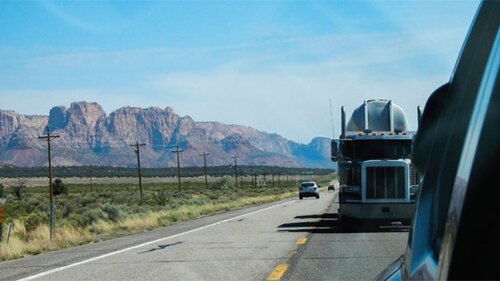Know your blind spots
The larger the vehicle, the larger the blind spot. Ask an employee to stand directly behind a parked vehicle with a safety cone. Have him or her walk straight back from the center of the vehicle until visible in the mirror to the driver. Measure the distance and remember this whenever backing is unavoidable.
Walk around the entire vehicle
Observe the proximity of structures, other cars, pedestrians, or overhanging wires. Map it out in your head before you get behind the wheel.
Avoid backups when possible
In a parking lot, pull through to the space ahead of you; don’t leave room for someone to park in front of your vehicle. If possible, park in the street rather than a driveway. In a parking lot, park towards the back of the lot to avoid other vehicles parking too close.
Don’t park in alleys you can’t drive through
Backing out of an alley into a busy street is dangerous for everyone. If you must park in the alley, back in (if local regulations allow it).
Use a spotter for difficult situations
Communicate with hand signals that the driver and spotter understand. This is important for situations where children are present, such as schools, play areas, and residential jobsites. Children are unpredictable and easily hidden in blind spots.
Get proper rest
Fatigue and lack of rest are major contributors to fleet accidents. Make sure drivers are well rested and alert when driving.
Use technology with caution
Back-up alarms, sonar, and mini cameras help warn bystanders and drivers of objects or people in the driver’s reverse path, but these tools can malfunction or fail if ignored by drivers and pedestrians.






